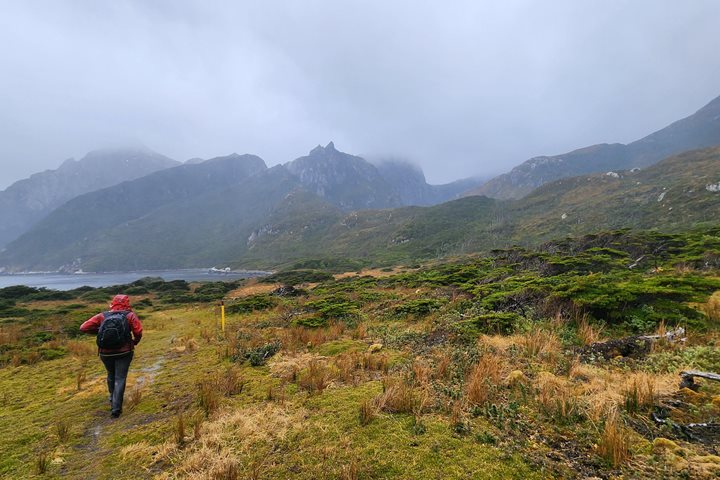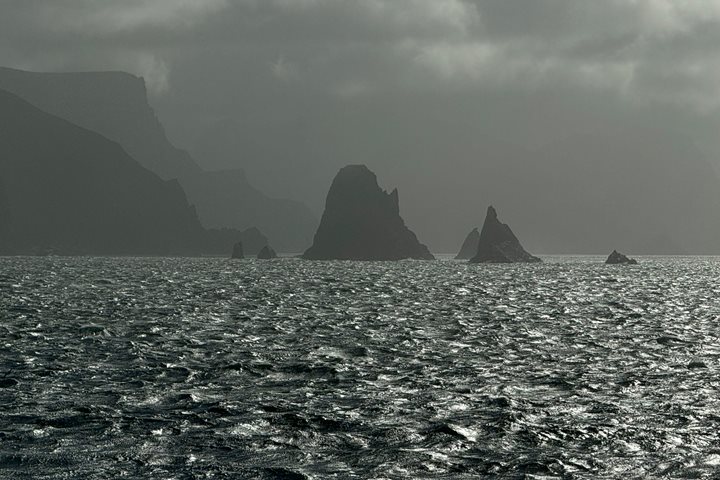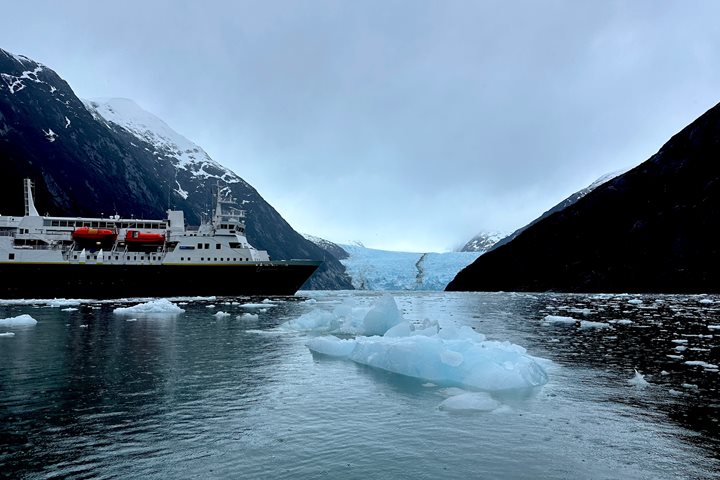Out of the rough and windy ocean, beyond the curved tip of South America (more precisely – the large island of Tierra del Fuego), the mountains of Staten Island emerge from the sea. It is as if the Andes are surfacing for a final breath of refreshing air before disappearing beneath the ocean. In the age of sail, most ships rounding Cape Horn sailed by Staten Island, and many of them wrecked on its shores. Aside from shipwrecked sailors who made it ashore, about the only people here have been a few sealers, prisoners, Antarctic explorers, scientists, and since 1976 - a very small outpost of the Argentinian Navy. It is protected as a nature preserve, and we are now among the lucky few to experience the beauty of its wild and rugged landscape. We explored Hoppner Bay via Zodiac, cruising into a hidden and magical inner bay, where calm waters were surrounded by lush, green vegetation. Later in the day, we landed near the eastern end of the island to visit ‘the lighthouse at the end of the world,’ then took a short Zodiac cruise to see a rockhopper penguin colony above the wave-swept shore.
- Daily Expedition Reports
- 05 Nov 2018
Argentina, Staten Island, 11/5/2018, National Geographic Orion
- Aboard the National Geographic Orion
- Patagonia







